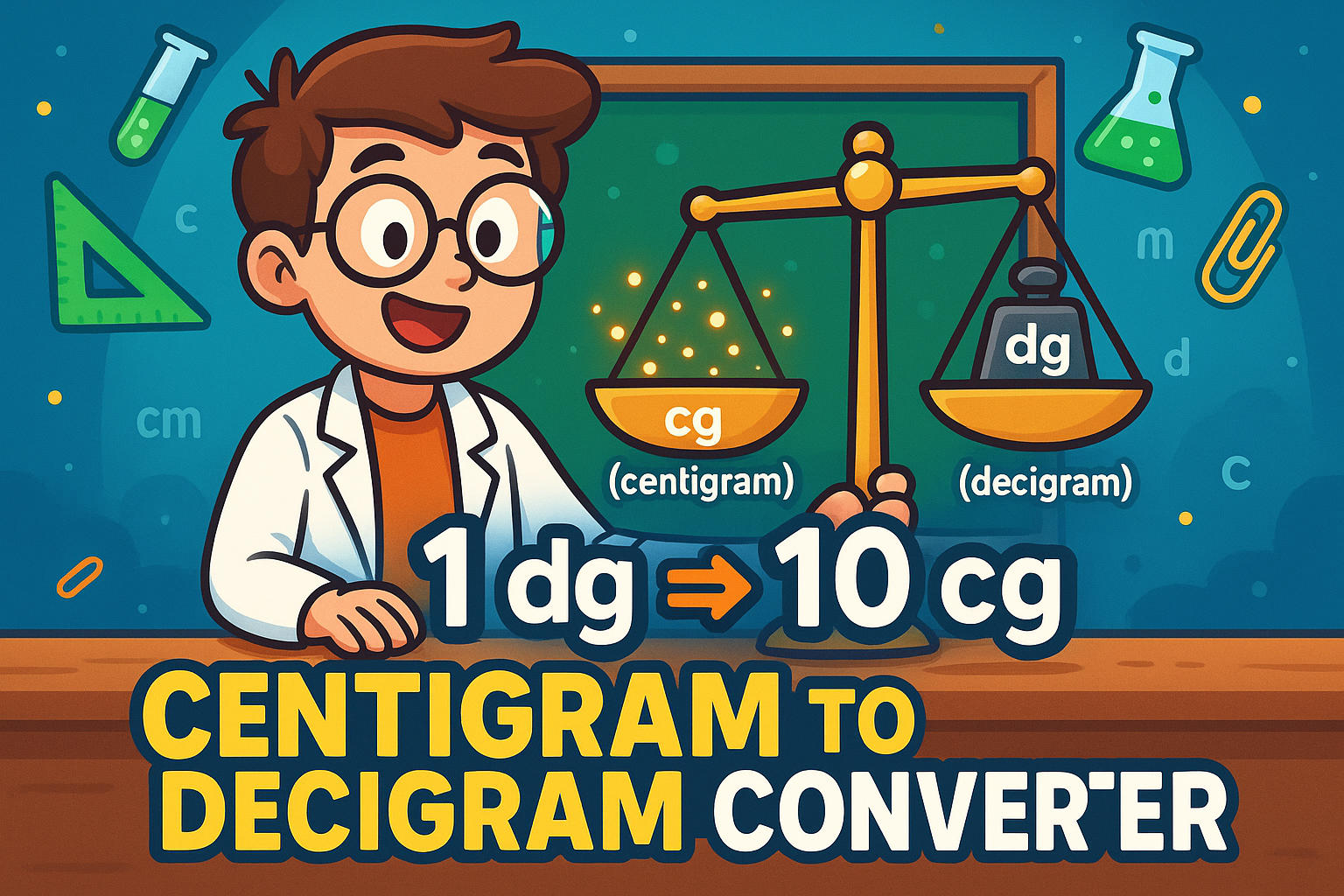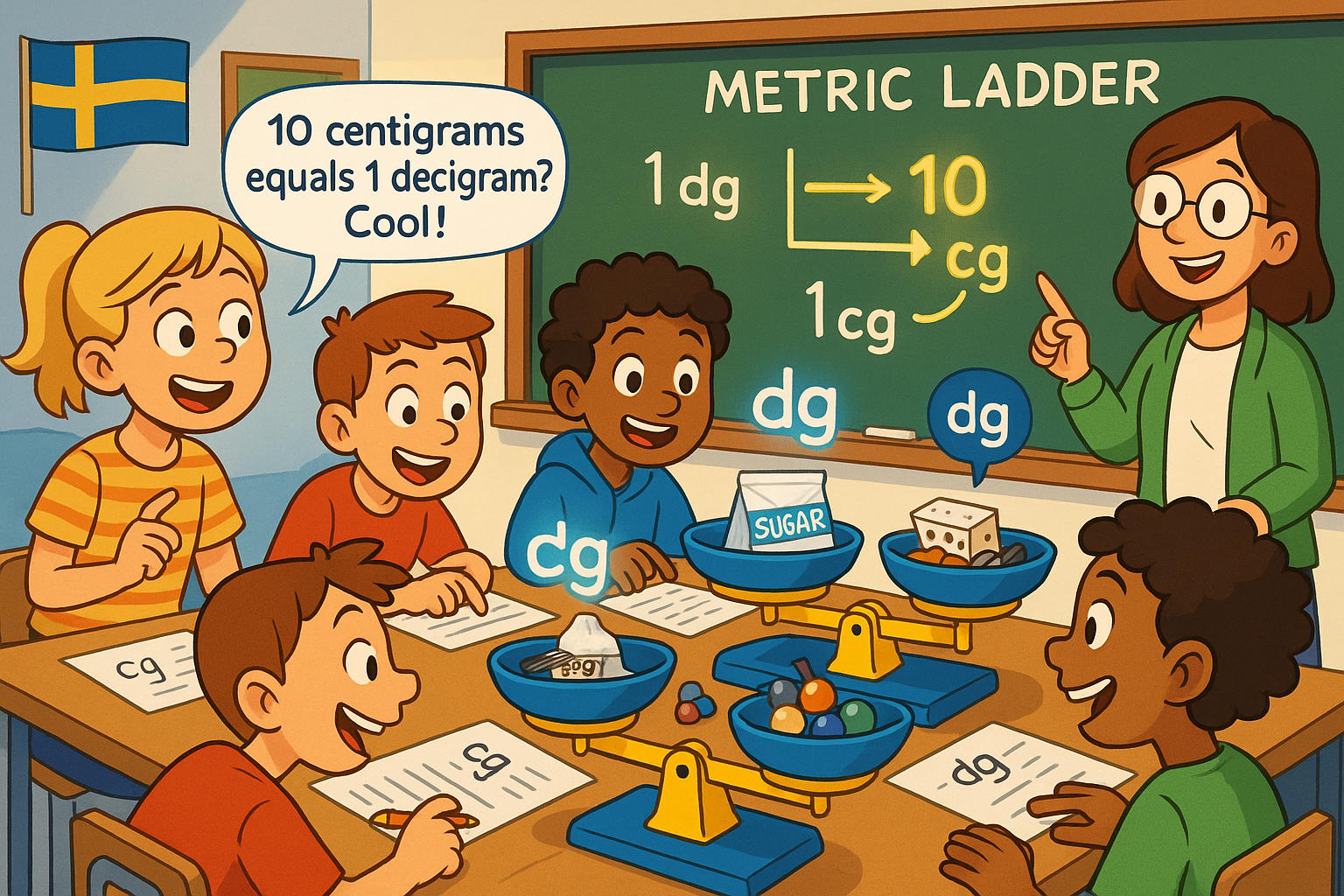centigram to decigram – How to convert cg to dg
Looking to convert centigram to decigram? Whether you're working with metric lab data, fine measurements in food science, or just brushing up on metric units, converting cg to dg is fast, logical, and essential for accuracy. This article breaks down everything from formulas to real-life applications. For instant conversions, try our unit conversion.

Centigrams and Decigrams - What do you need?
A centigram (cg) is a metric unit of mass equal to one-hundredth of a gram. Centigrams are often used in chemistry labs, food labeling, and educational settings where precision is required but the gram is too large.
A decigram (dg) is a slightly larger metric unit. That makes a decigram equal to 10 centigrams.
Although not widely used in everyday settings, dg is useful in scientific experiments, nutritional values, and pharmaceutical measurements—especially in Europe and academic environments. If you're scaling up, also check out our decigram to centigrams converter.
How to Convert Centigram to Decigram
The conversion is simple:
1 decigram (dg) = 10 centigrams (cg)
For example, If you have 4.2 decigrams, the conversion would be:
4.2 × 10 = 42 centigrams
So, 4.2 dg = 42 cg
Want to skip the math? Use our fast weight converter to handle both directions instantly.
Did you know?
-
In high school chemistry labs, students often use balances accurate to centigrams when handling salts, powders, or reagents for titration experiments.
-
Some older European food labels used decigrams instead of grams to express nutritional content for better visibility of micronutrients.
-
In 19th-century apothecaries, medicines were dosed out using centigram-level precision, especially when dealing with potent herbs or powders.
-
The weight of a paperclip is about 1 decigram, making it a relatable everyday object for understanding small metric weights.
-
In forensic labs, trace evidence like paint chips or fiber fragments may be recorded in centigrams when larger units aren’t practical.
-
In medical labs, certain urine or blood compound concentrations are recorded using decigrams to ensure precise clinical dosage recommendations.
Metric Learning in Motion: The Classroom Scale
In a 6th-grade science class in Sweden, students were challenged to weigh small objects like sugar packets, pins, and marbles using metric units. But there was a twist: they could only use decigrams and centigrams on their worksheets.
The students quickly discovered how useful it was to switch between cg and dg—especially when calculating averages or comparing items. It wasn’t just math—it was hands-on learning using the metric ladder.
This activity has since become a favorite in STEM classrooms across Europe, proving that even the smallest units can make a big impact in how students understand measurement.

Conclusion
How to convert centigram to decigram is all about knowing how metric prefixes relate. These simple equations are rooted in the metric system’s base-10 design, making conversions quick and consistent. Whether you're working in science labs, classrooms, or cooking with precise ingredients, moving between cg and dg gives you the control you need at small scales.
Need help with other units too? Try JetCalculator’s conversion tool or weight converter for instant, accurate results across all metric levels.

